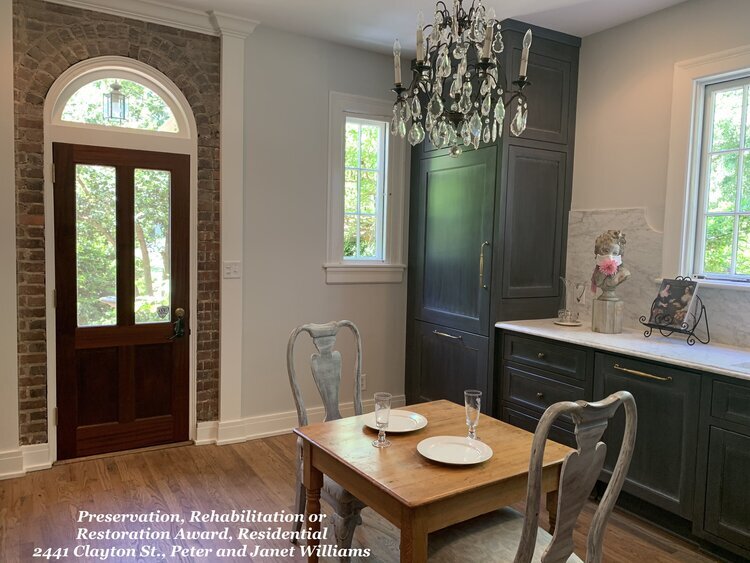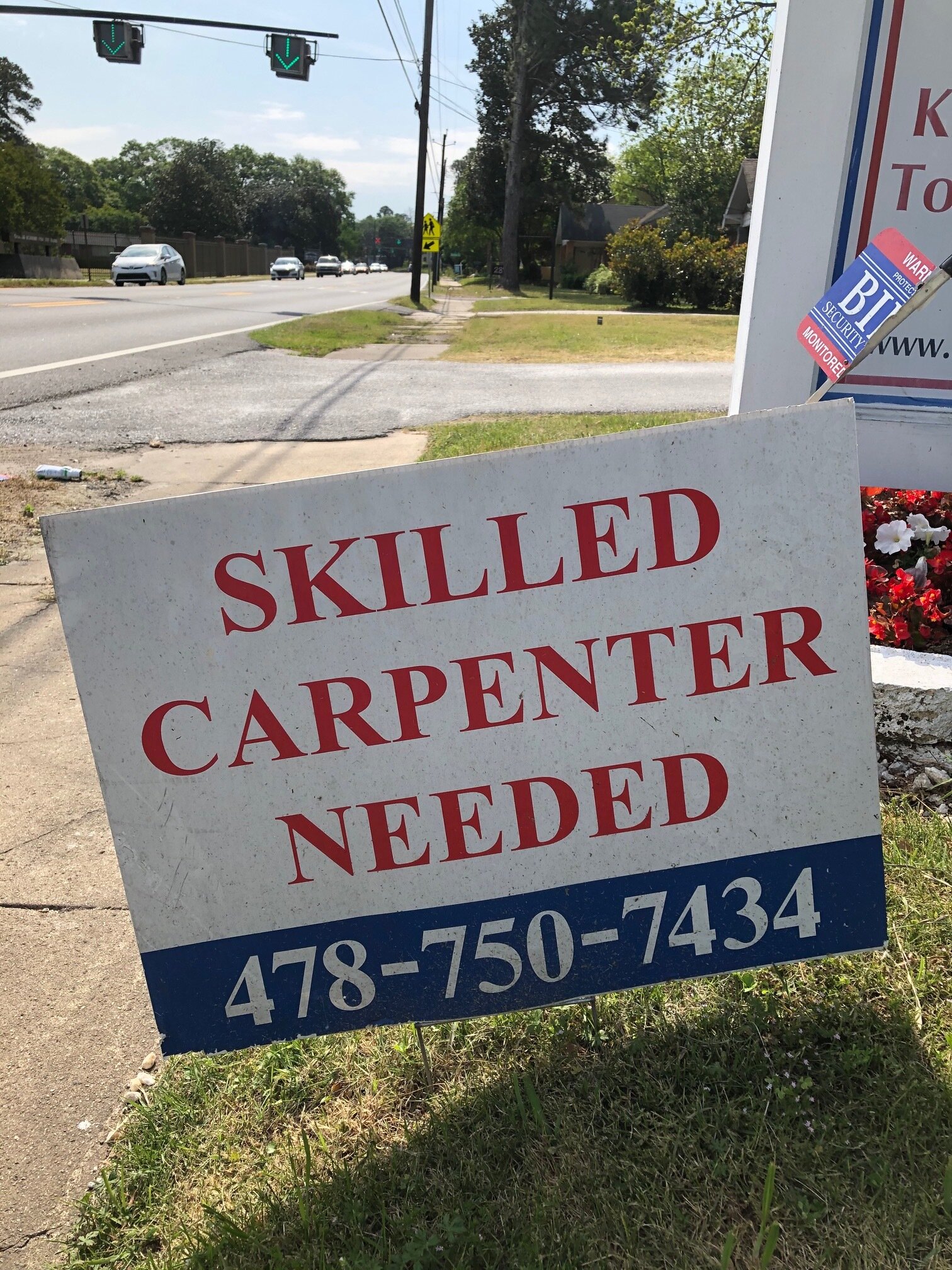As home-improvement projects go, it was nothing like the 1986 Tom Hanks movie “The Money Pit.”
Still, Janet Williams needed extensive work done on her nearly 100-year-old home in the Vineville Historic District when she and her husband, Pete, moved to Macon from Decatur.
They were getting two full bathrooms redone, replacing fascia, wiring, copper gutters — and much more.
Finding a carpenter — especially one who could work on an older home — was among the biggest hurdles they faced.
“If I had a carpenter in my bag, I would be doing all sorts of things I’m not doing now,” she said. “We need it now more than ever, and it’s hard to find people who are good at it.
“I would love to see people take it up as a calling.”
You’d get no argument from Shawn Stafford.
Stafford opened Stafford Builders and Consultants on Napier Avenue in 1999, although he’d worked in construction in Macon for 12 years before that. His niches over the years have been church construction and work on federal properties.
He needs a variety of folks across the trades spectrum to carry out his projects, from masons to carpenters. Especially carpenters.
“When I was a kid, being a carpenter was a big deal. We saw the value in it,” the 70-year-old said. “We’ve downplayed it so much (over the years) that we stopped teaching it. But it’s a skill that’s needed in this town.”
That perspective is one reason Historic Macon is trying to help.
During a recent news conference, Executive Director Ethiel Garlington announced a series of trades-related initiatives that will begin this month. He said Historic Macon’s has a standing challenge of finding skilled tradespeople — especially carpenters — who are willing to take on work at historic properties.
He cited surveys by the Associated General Contractors of America and the National Association of Home Builders that lamented the lack of skilled workers and the difficulty in hiring them. And for historic preservation projects, that shortfall is even more pronounced.
Now, thanks to a $100,000 grant from the Watson-Brown Foundation, Historic Macon will soon test three initiatives that aim to make a difference.
“Our hope,” Garlington said, “is that learning from these pilot programs, we’ll be able to raise additional capital and grow and expand the successful programs.”
First, Historic Macon soon will be hiring three trades apprentices for a 10-week course that starts June 1. The program will blend on-the-job training with classroom instruction and travel to prominent sites in the region. The goal is for the three apprentices to find full-time construction jobs after the program.
Historic Macon also will hold a series of workshops that help teach homeowners and professionals alike, often with hands-on instruction. First up is a tool safety session called “Fingers and Toes” May 15. On May 22, “Stile-ish Doors” will show how to renovate both wooden and glass doors.
But that’s not all. Coming soon, HMF will open a new tool library, where Macon residents can swing by and borrow a variety of tools for their home projects. Stay tuned for details.
We know these initiatives aren’t a cure-all. They’re a small step in trying to improve the situation. But it’s a start.
For Stafford, another part of the solution would entail bringing training programs for the building trades back to schools.
“Why not teach it just like you do engineering?” he asked. “It’s a workforce crisis. You can talk to a thousand contractors and hear the same thing.” (Stafford said he’d pay a crackerjack carpenter $60,000 right out of the gate.)
He used an analogy to drive home the opportunity that many young adults are missing out on.
“If you saw a gold bar on the floor, you’d reach down and pick it up,” he said. But too many people are walking on by and “don’t see the value” in learning a trade.
“These kids need to learn to love this industry,” he said. “I can never remember a day I didn’t want to get to work.”
Johnny McClendon, who owns IconiCraft Custom Cabinets, has watched the decline for the last generation. He remembers the boom times of the early ’90s, then a slow slide since then.
“I’m deeply embedded in this business, and it’s just gone away,” the 59-year-old said of the talent pool. “It’s gotten scarcer and scarcer and scarcer.”
He’s doing his part too. He has a 19-year-old working for him, helping him learn the ropes of the craft. But McClendon knows he could leave at any time.
“It’s just hard to find people with a love for it,” he said.
And there’s another aspect. Carpenters are tailor-made to become construction superintendents, Stafford said. They’re on a job from start to finish. They read blueprints, devise layouts, help frame up a project, do trim work — and plenty more.
“They see everything in between. They see the process more than any other trade.”
Helping Stafford on a job site next-door to the H&H Soul Food restaurant recently was 69-year-old Eric Turner. He said his grandfather taught him a lot about carpentry and woodworking when he was young. As a teenager he began making house repairs, “and I just kept going with it.”
He acknowledged that carpentry is not for everybody. You’ve got to pay attention and be willing to listen and learn. And it’s rugged. You work in the winter cold and the summer heat, often outdoors.
“You’ve got to withstand the elements,” he said, and not everyone wants to do that these days.
But there’s a certain satisfaction in working with your hands, seeing something you build take shape, “and you’ll always have a job — anytime or anywhere.”
“That’s where you get your joy from,” he said. “You can always look back and say I had a part in that.”









